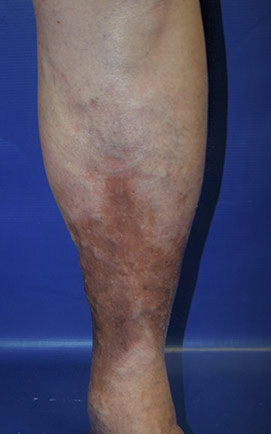What’s a venous ulcer? Are they dangerous? When should I see a doctor?
Venous leg ulcers are wounds that occur when the veins in your legs fail to circulate blood properly. The pooling of the blood in your veins can lead to an ulcer forming. While venous leg ulcers can occur in anyone, they are most common in older adults.
If you believe you’re suffering from this condition, it’s essential to consult a venous ulcers doctor as soon as possible to prevent further damage and complications.
The New York Vein Treatment Center offers the most advanced treatments for vein disorders, including venous ulcer therapies. Here’s what you need to know about this condition and its treatment options.
What are venous leg ulcers, and what causes them?
Venous leg ulcers are open wounds typically found on the lower legs or ankles. They often involve pain and irritation of the affected area. Most venous leg ulcers develop due to venous disease, a long-term condition affecting the circulatory system.
Several factors lead to venous disease:
• Aging
• Genetics
• Pregnancy
• Smoking
• Sitting or standing for long periods
• Varicose veins
• Clotting abnormalities
It’s essential to see a venous ulcers doctor if you suspect you have ulcers or venous diseases. They’ll rule out potential issues and help you manage your condition.
What are the symptoms of venous leg ulcers?
Venous leg ulcers can be painful and unpleasant. Watch for these common symptoms:
• Indentation in the affected area.
• Discolorations (blueish or reddish tones).
• A feeling of heaviness in the affected area.
• Redness around the wound.
• Fluid leaking from the ulcer that may have an odor.
• Swelling of the ankles or lower legs.
• Itching in the affected spot.
Sometimes, the skin feels tight or prickly around a venous ulcer. If left untreated, the skin surrounding the wound might slowly deteriorate.
In severe cases, venous leg ulcer infection may develop and spread, resulting in a fever.
It’s vital to see a vein ulcer medical provider when experiencing these symptoms.
How are venous leg ulcers treated?
Venous leg ulcers are wounds caused by venous insufficiency. The elderly are most at risk of developing leg ulcers, but these ulcers can form at any age.
Treatment for venous leg ulcers involves controlling venous hypertension, which breaks down tissue and causes venous stasis. This is done by helping to restore venous flow and reduce edema in affected areas.
To achieve this, a venous ulcer doctor may suggest compression therapy using compression stockings, offloading devices, or wound dressings to help protect the wound.
Anti-inflammatories and antibiotics may be prescribed to treat an infection.
In more complex cases, venous reconstructive surgery might be recommended to decompress the deep venous system and improve healing outcomes.
How do I prevent venous leg ulcers?
Venous leg ulcers can be painful, expensive, and difficult to treat. Preventing them from occurring in the first place helps you avoid the long and challenging healing process.
To lower your risk of acquiring a venous leg ulcer, try implementing specific lifestyle changes:
• Exercise regularly
• Elevate your legs
• Wear compression stockings
• Control high blood pressure
• Manage your diabetes
Taking these steps can drastically minimize your risk of developing a leg ulcer, making it easier to remain active and comfortable.
While waiting to see a doctor, what can I do to keep my leg ulcer from worsening?
Living with a venous leg ulcer can be a challenging experience. Unfortunately, these ulcers often involve pain, discomfort, and possible infection. Fortunately, there are measures you can take to help relieve the pain while treating the wound.
To manage your pain, try using over-the-counter medications like ibuprofen or Tylenol. Before taking any pain relievers, check with your doctor to ensure these medications are safe for you to take.
Additionally, try elevating your leg and using medical-grade compression stockings to reduce swelling and improve circulation.
If your leg ulcer has become an open wound, keeping the area clean is vital. Use antibiotic ointment to prevent or manage infection, and regularly change your bandages or dressings.
By addressing your pain and discomfort while attending to any open wounds, you should be able to manage your leg ulcer until you can see your doctor.
Where can I find a venous ulcers doctor?
Look no further than New York Vein Treatment Center. Our practice has been successfully treating leg ulcers since 2007. We use a patient-centered approach involving personalized intervention plans and lifestyle suggestions.
Contact our venous ulcers doctor today to schedule an evaluation.

Dr. Lev Mark Khitin, a leading cardiovascular and thoracic surgeon, is the founder of the New York Vein Treatment Center. With almost 20 years of experience and over 20,000 successful vein procedures, he is a renowned expert in the diagnosis and treatment of venous disease. Dr. Khitin’s patient-centered approach and advanced surgical skills have consistently delivered excellent results, making him a prominent figure in the field.


